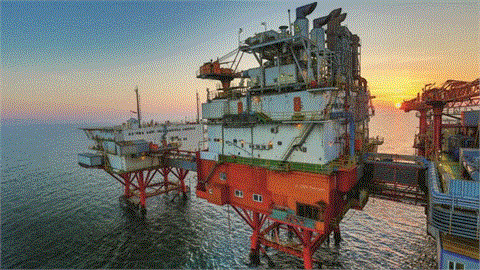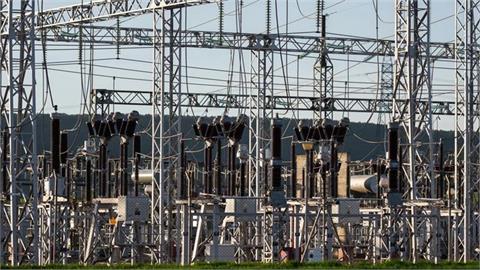by Tsvetana Paraskova* The geopolitical risk premium has taken center stage as one of the key drivers of oil prices in recent months, often trumping fundamentals to send prices soaring on concerns about where the next sudden oil supply disruption would come from
The geopolitical risk premium has taken center stage as one of the key drivers of oil prices in recent months, often trumping fundamentals to send prices soaring on concerns about where the next sudden oil supply disruption would come from.
In recent weeks, a perfect storm of nearly erased global oil glut and simmering—and at times flaring—tensions in the Middle East and the worst production loss without an armed conflict (Venezuela) have supported oil prices and boosted them to levels last seen in November 2014.
In the coming weeks and months, geopolitical risks could further boost oil prices in a market that hasn’t been this tight in years. The main risks to oil supply could come from the Middle East, North Africa, and Venezuela.
S&P Global Plattshas summed up the key flashpoints around the world that could lead to oil supply disruptions, potentially further boosting oil prices.
Iran
OPEC’s third-largest producer Iran—which pumps 3.8 million bpd as per OPEC’s secondary sources—could be the most immediate threat to supply.
U.S. President Donald Trump has until May 12 to decide whether to waive the sanctions against Tehran as part of the nuclear deal that global powers signed with Iran. Analysts think that the possibility of President Trump not waiving the sanctions is high, but theydivergewildly as to how a no-waiver would impact Iran’s oil exports and global oil prices. Estimates vary from a zero to one million bpd loss of supply out of Iran, and a premium to oil prices of between $2 and $10. Iran’s top oil customers are China, India, and South Korea.
Yemen
The Iran-Saudi proxy war in Yemen risks escalating. The Iran-aligned Yemeni rebels—who have been fighting a Saudi-led Arab coalition in Yemen since 2015—have beentargetingSaudi Aramco oil facilities and the Saudi capital Riyadh with missiles and have been trying to attack Saudi oil tankers in the sea. Yemen lies along one of the main global oil chokepoints in the Red Sea. Millions of barrels of crude oil pass Yemeni shores from the Suez Canal en route to Europe every day.
The Red Sea
The conflict in Yemen is also a risk to tanker route disruptions in the Red Sea. While Yemen is not a major oil producer, further escalation of the war could spill over to the oil chokepoints around the Middle East that could disrupt oil tanker routes and flows.Related: China’s No.1 Oil Company Cuts Saudi Crude Imports
The Bab el-Mandeb Strait is one of the key chokepoints around the Arabian Peninsula. Located between Yemen, Djibouti, and Eritrea, Bab el-Mandeb connects the Red Sea with the Gulf of Aden and the Arabian Sea. According to EIAestimates, a total of 4.8 million bpd of crude oil and refined petroleum products flowed through this waterway in 2016 toward Europe, the United States, and Asia.
The Strait of Hormuz
The Strait of Hormuz is the world’s most important chokepoint, with an oil flow of 18.5 million bpd in 2016, the EIA estimates. The Strait of Hormuz connects the Persian Gulf with the Gulf of Oman and the Arabian Sea and is the key route through which Persian Gulf exporters—Saudi Arabia, Iran, Iraq, Kuwait, Qatar, the UAE, and Bahrain—ship their oil. Only Saudi Arabia and the UAE have pipelines that can ship crude oil outside of the Persian Gulf and have additional pipeline capacity to bypass the Strait of Hormuz, which is a route of more than 30 percent of daily global seaborne-traded crude oil and petroleum products and more than 30 percent of the liquefied natural gas (LNG) flows. Iran hasthreatenedin the past to block the Strait of Hormuz, and although analysts think that it would struggle to do so due to the U.S. naval presence in the area, a further flare-up in the Tehran-U.S. relations could be a risk to the oil flows in this vital global chokepoint.
Syria
The complex proxy conflict in Syria is also a risk to heightened tension in the Middle East, although Syria is not a big oil producer. Further escalation of the conflict, or heightened U.S. vs. Russia/Iran tension, is a risk to which the oil market could react.
Iraq
Iraq—OPEC’s second-largest producer behind Saudi Arabia—is holding parliamentary elections on May 12 amid still unresolved issues with the Kurdish region that have hit Iraq’s oil exports from the north to Turkey’s Mediterranean coast. According to Platts, the election is a short-term risk as it could delay assigning oil contracts as Iraq is pushing for recovery of its oil, refining, and civil infrastructure sectors after it declared victory over ISIS at the end of last year.
Unsurprisingly, the Middle East is home to most of the oil supply risks. But there are other geopolitical risk factors to oil prices, both close to the Middle East and far off in Latin America.
Libya
The North African oil producer has managed to lift its production to around 1 million bpd, but risks still persist with rival factions fighting for control and suddenly disrupting oil facilities’ operations and oil export terminals.
Venezuela
Venezuela’s oil production is crumbling, and the only way ahead is further down, all analysts say. The only question is how low the production could drop. According to OPEC’s secondary sources, Venezuela’s oil production averaged 2.154 million bpd in 2016, and 1.916 million bpd in 2017. In March 2018, its production plunged to 1.488 million bpd. Oil production is set to further collapse amid lack of maintenance, staff exodus, and the economy in total disarray. Venezuela holds a presidential election on May 20, which the U.S. and several Latin American nations say they will not recognize. New sanctions on Venezuela could follow, including a possible ban on U.S. light oil exports that Venezuela uses to blend its heavy oil to move it through pipelines.
To be sure, none of the above geopolitical risks could materialize, but even if just one or two were to occur and actually disrupt oil supply, oil prices could surge in this tight market.
*Tsvetana is a writer for the U.S.-based Divergente LLC consulting firm with over a decade of experience writing for news outlets such as iNVEZZ and SeeNews.
(Oilprice.com,May 03, 2018)




